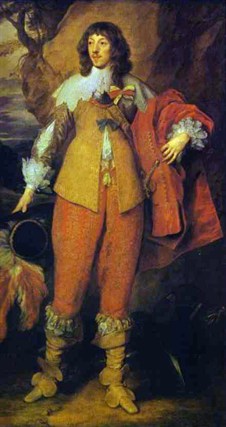Henry II of Guise
 Henry II of Guise (1614-1664) was the second son of Duke Charles I, and as such had been destined as a child to an ecclesiastical career. The archbishop of Rheims at the age of fifteen, he obtained a dispensation from his vows because he was called, after the death of his father and elder brother, to be the new Duke of Guise (1640). His incredible life led him throughout Europe. In the French court he plotted against Cardinal Richelieu, then he fled to Flanders to avoid a death sentence. Pardoned in 1643 and having recovered the duchy, he attempted to claim the legacy that his family already had for some time: that of the Angevin kings in the kingdom of Naples. After taking an oath in the Cathedral in the presence of Cardinal Filomarino, the role of Guise in the Royal Neapolitan Republic, however, was uncertain, and the ambitions of the French nobleman certainly went beyond the simple military command and the role of protector of the Republic. The return of the Spaniards in the city, on the night between 5 and 6 April 1648, caused the end of the revolutionary experience and Guise attempted escape. Captured, the duke lived in a privileged prison in the following years, between Naples and Spain. Once released, he tried a second time, and again with little luck, to conquer the kingdom of Naples. He ended his days in Paris, as Grand Chamberlain of Louis XIV.
Henry II of Guise (1614-1664) was the second son of Duke Charles I, and as such had been destined as a child to an ecclesiastical career. The archbishop of Rheims at the age of fifteen, he obtained a dispensation from his vows because he was called, after the death of his father and elder brother, to be the new Duke of Guise (1640). His incredible life led him throughout Europe. In the French court he plotted against Cardinal Richelieu, then he fled to Flanders to avoid a death sentence. Pardoned in 1643 and having recovered the duchy, he attempted to claim the legacy that his family already had for some time: that of the Angevin kings in the kingdom of Naples. After taking an oath in the Cathedral in the presence of Cardinal Filomarino, the role of Guise in the Royal Neapolitan Republic, however, was uncertain, and the ambitions of the French nobleman certainly went beyond the simple military command and the role of protector of the Republic. The return of the Spaniards in the city, on the night between 5 and 6 April 1648, caused the end of the revolutionary experience and Guise attempted escape. Captured, the duke lived in a privileged prison in the following years, between Naples and Spain. Once released, he tried a second time, and again with little luck, to conquer the kingdom of Naples. He ended his days in Paris, as Grand Chamberlain of Louis XIV.
Read more:
- H. de Lorraine, duc de Guise, Les memoires de feu Monsieur le duc de Guise, Cologne 1669.
